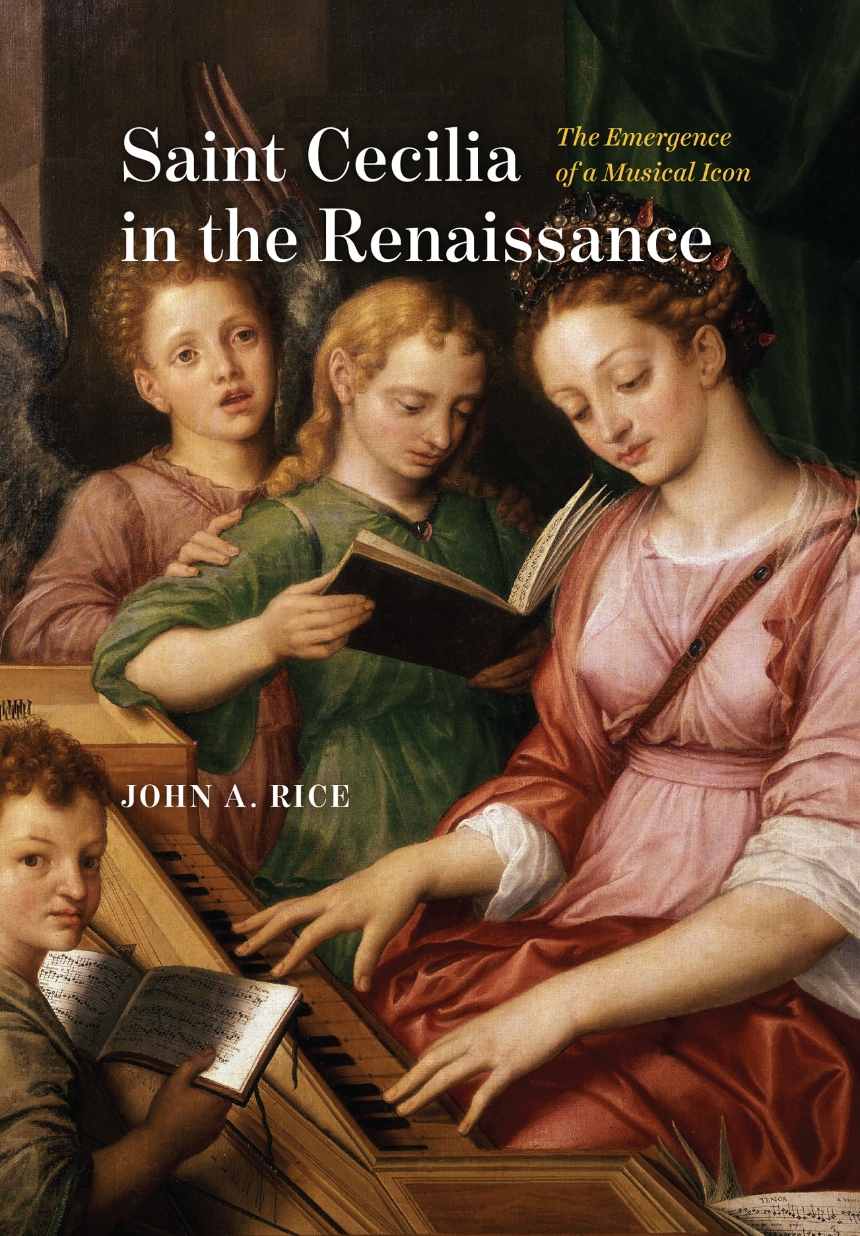Saint Cecilia in the Renaissance
The Emergence of a Musical Icon
This study uncovers how Saint Cecilia came to be closely associated with music and musicians.
Until the fifteenth century, Saint Cecilia was not connected with music. She was perceived as one of many virgin martyrs, with no obvious musical skills or interests. During the next two centuries, however, she inspired many musical works written in her honor and a vast number of paintings that depicted her singing or playing an instrument.
In this book, John A. Rice argues that Cecilia’s association with music came about in several stages, involving Christian liturgy, visual arts, and music. It was fostered by interactions between artists, musicians, and their patrons and the transfer of visual and musical traditions from northern Europe to Italy. Saint Cecilia in the Renaissance explores the cult of the saint in Medieval times and through the sixteenth century when musicians’ guilds in the Low Countries and France first chose Cecilia as their patron. The book then turns to music and the explosion of polyphonic vocal works written in Cecilia’s honor by some of the most celebrated composers in Europe. Finally, the book examines the wealth of visual representations of Cecilia especially during the Italian Renaissance, among which Raphael’s 1515 painting, The Ecstasy of Saint Cecilia, is but the most famous example. Thoroughly researched and beautifully illustrated in color, Saint Cecilia in the Renaissance is the definitive portrait of Saint Cecilia as a figure of musical and artistic inspiration.
Until the fifteenth century, Saint Cecilia was not connected with music. She was perceived as one of many virgin martyrs, with no obvious musical skills or interests. During the next two centuries, however, she inspired many musical works written in her honor and a vast number of paintings that depicted her singing or playing an instrument.
In this book, John A. Rice argues that Cecilia’s association with music came about in several stages, involving Christian liturgy, visual arts, and music. It was fostered by interactions between artists, musicians, and their patrons and the transfer of visual and musical traditions from northern Europe to Italy. Saint Cecilia in the Renaissance explores the cult of the saint in Medieval times and through the sixteenth century when musicians’ guilds in the Low Countries and France first chose Cecilia as their patron. The book then turns to music and the explosion of polyphonic vocal works written in Cecilia’s honor by some of the most celebrated composers in Europe. Finally, the book examines the wealth of visual representations of Cecilia especially during the Italian Renaissance, among which Raphael’s 1515 painting, The Ecstasy of Saint Cecilia, is but the most famous example. Thoroughly researched and beautifully illustrated in color, Saint Cecilia in the Renaissance is the definitive portrait of Saint Cecilia as a figure of musical and artistic inspiration.
384 pages | 73 color plates, 7 halftones, 53 line drawings, 30 tables | 7 x 10 | © 2022
Art: European Art
Music: General Music
Religion: Christianity
Reviews
Table of Contents
List of Illustrations
List of Musical Examples
List of Tables
Bibliographic Abbreviations and Library Sigla
A Note on Spelling, Terminology, Musical Examples, and Translations
Introduction
1 Wedding Music: Retelling the Passio in Medieval and Early Renaissance Liturgy, Literature, and Art
2 Beyond the Legend and Liturgy: The Organ as Emblem
3 The Celebration of Cecilia’s Day by Musical Organizations and Singers in the Netherlands and France
4 Franco-Flemish Cecilian Motets: Composers, Publishers, Performers, Venues
5 Franco-Flemish Cecilian Motets: Words and Music
6 Italian Artists Depict Cecilia from the Late Fifteenth Century to the Late Sixteenth Century
7 Cecilia Returns to Rome
Epilogue: From Saint to Muse
Acknowledgments
Appendix: Music for Cecilia Published or Copied before 1620: Chronological List
Notes
Bibliography
Index
List of Musical Examples
List of Tables
Bibliographic Abbreviations and Library Sigla
A Note on Spelling, Terminology, Musical Examples, and Translations
Introduction
1 Wedding Music: Retelling the Passio in Medieval and Early Renaissance Liturgy, Literature, and Art
2 Beyond the Legend and Liturgy: The Organ as Emblem
3 The Celebration of Cecilia’s Day by Musical Organizations and Singers in the Netherlands and France
4 Franco-Flemish Cecilian Motets: Composers, Publishers, Performers, Venues
5 Franco-Flemish Cecilian Motets: Words and Music
6 Italian Artists Depict Cecilia from the Late Fifteenth Century to the Late Sixteenth Century
7 Cecilia Returns to Rome
Epilogue: From Saint to Muse
Acknowledgments
Appendix: Music for Cecilia Published or Copied before 1620: Chronological List
Notes
Bibliography
Index
